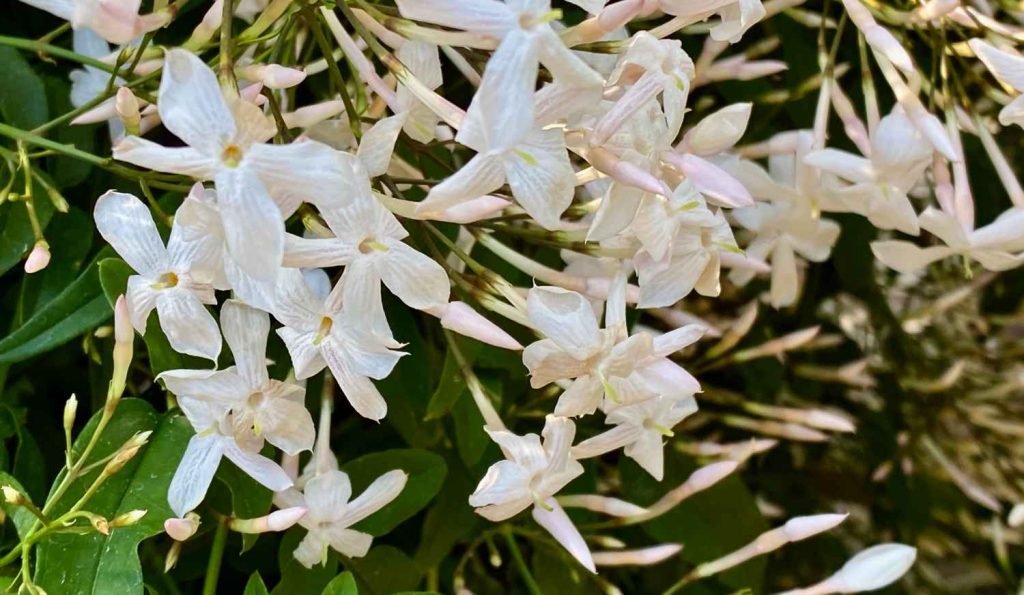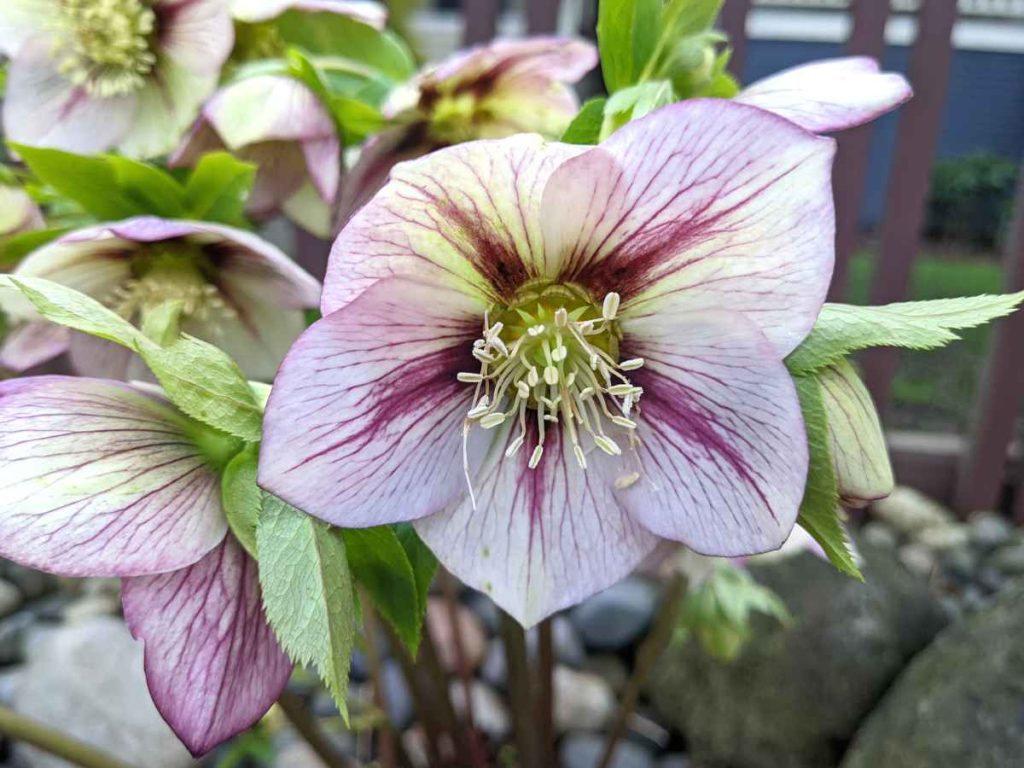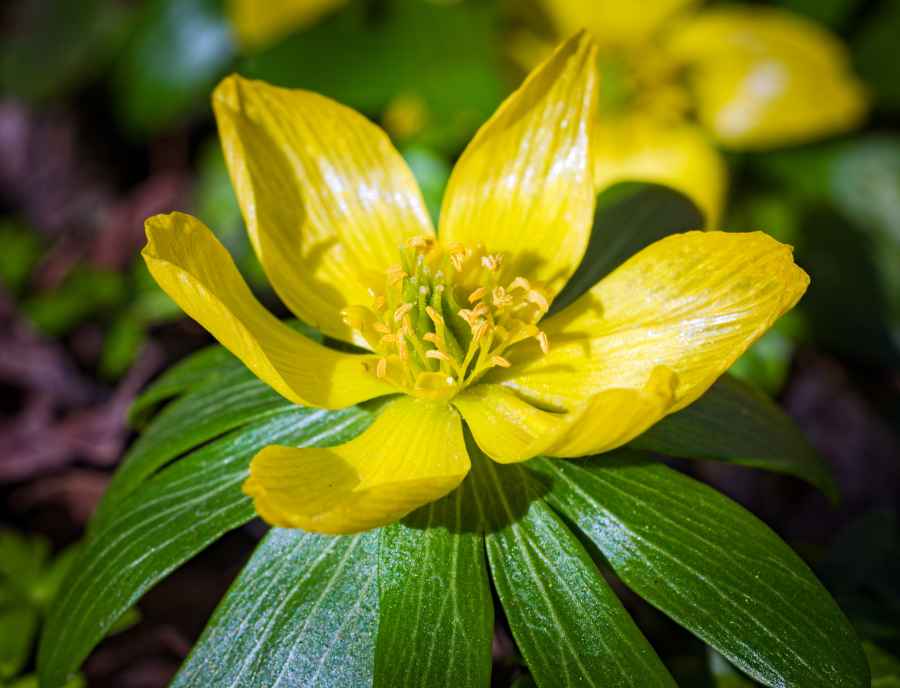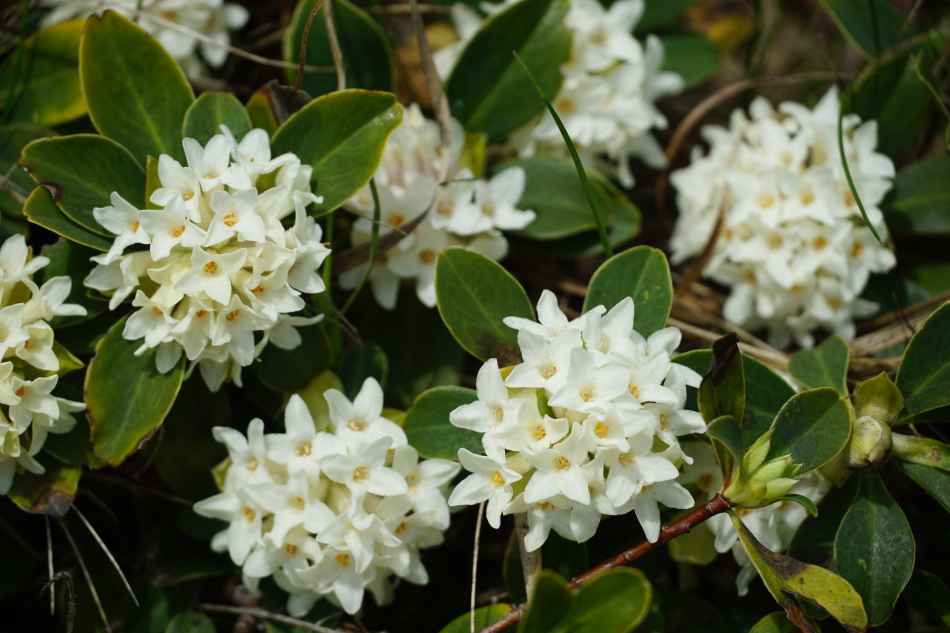Irrespective of what most green-thumb gardeners think, there is no holiday for in a gardener’s calendar. Not even in winter, when most plants go dormant.
If climatic conditions in your region isn’t favourable to grow plants in backyard, then you can start the indoors. Gardeners living in warmer corners of USA can try to plant flowering plants that are cold-hardy.
Winter is also a season of planning for your blooming backyard in spring.
However, it is essential that you ensure the plant you choose to grow can tolerate weather conditions in your region. You can check USDA hardiness zones here.
In mild winters with just a little chill, plants like pansies and violas bring color all season long. In cooler climates, hardy plants like hellebores and winter aconite thrive outdoors, adding cheer early on.
For colder areas with frost, bulbs like snowdrops and witch hazel give bright blooms despite the cold.
In warmer subtropical winters, camellias and winter jasmine offer vibrant flowers and lovely scents.
For very cold spots, growing indoor herbs like mint and chives by a sunny window keeps your garden green indoors.
21 Flowering Plants that You Can Plant in Winter
Choose cold-hardy flowering plants that can enjoy vibrant blooms and delightful fragrances throughout the chilly season.
Growing needs of these flowering plants changes according to climatic conditions. So, you don’t have to water regularly. Else, it may easily experience root rot.
Later at the end of the article I’ll share few important tips on winter plant care.
1. Pansy
Pansies are classic winter bloomers that come in a spectrum of colors, from vibrant purples to soft pastels and bright yellows. These hardy annuals are not only beautiful but also incredibly versatile, perfect for beds, borders, containers, or even winter bedding displays.
Pansies are known for their excellent cold tolerance, making them ideal for chilly winter climates. They bloom continuously with minimal care and add cheerful color when most other plants are dormant. They prefer full sun to partial shade and thrive in rich, well-draining soil with regular watering to keep the soil moist.
Also Read: 15 Flowers to Plant in November to Beautify Spring Garden
2. Calendula (Pot Marigold)

Calendula produces bright orange or yellow daisy-like flowers and is known for its medicinal properties. This annual or short-lived perennial has been cultivated for centuries and blooms almost continuously until the first heavy frost.
Calendula is one of the easiest and most reliable winter flowers. It grows fast, resists frost, and blooms brightly with basic care, making it perfect for beginner gardeners. Plant it in full sun with well-draining soil enriched with organic content, and keep the soil moderately moist.
3. Winter Jasmine

Winter jasmine showcases bright yellow flowers during the coldest months, often blooming before many other plants wake up. Its trailing branches and vibrant blooms make it an excellent choice for bare walls, trellises, or slopes in winter gardens.
This vine is incredibly hardy and requires minimal maintenance. It provides a cheerful splash of color when the garden needs it most and can tolerate harsh winter conditions. It thrives in full sun to partial shade and adapts well to most soil types.
4. Dianthus (Sweet William)

Dianthus offers fragrant blossoms in pinks, reds, and whites with delightful spicy-sweet scents. It is a resilient plant that thrives in winter, suitable for borders, rock gardens, or containers.
These charming flowers are easy to grow and add both visual appeal and wonderful fragrance to your winter garden. They prefer well-drained soil and full sun to partial shade with regular watering to maintain soil moisture.
Check this: 19 Best Christmas Flowers to Beautify Your Holiday Season
5. Hellebore (Christmas Rose)

Hellebores are enchanting evergreen perennials with rose-shaped flowers that bloom from late winter into early spring. They can handle cold weather exceptionally well and provide early-season interest in shade or part-shade areas.
Available in colors ranging from white and pink to deep purple and green, hellebores are long-lived plants that improve with age. They’re perfect for woodland gardens and shaded spots, preferring rich, moist soil with good drainage and partial to full shade.
6. Viola

Smaller than pansies but just as vibrant, violas bloom in a variety of colors and can tolerate frosty days with ease. They are great for borders, pots, or hanging baskets during winter months.
Violas have a delicate appearance but are surprisingly tough. They continue blooming even in cold temperatures and often self-seed, returning year after year. They thrive in full sun to partial shade with well-drained, nutrient-rich soil and regular watering.
7. Sweet Alyssum

Sweet Alyssum creates a carpet of tiny white or pastel-colored flowers with a subtle honey-like fragrance. These low-growing beauties are perfect for filling gaps in garden beds and adding a delicate scent to your winter garden.
In regions with little to no snow, these plants can thrive seamlessly from fall to spring. Despite blossoms diminishing in heat, they have the remarkable ability to self-sow, ensuring a resurgence in cooler weather. Plant them in full sun to partial shade with well-draining, fertile soil and moderate moisture.
Also Read: How to Plant Daffodil Bulbs in Fall?
8. Snapdragon

Snapdragons produce tall flower spikes in many colors including pink, red, yellow, and white. They often bloom through winter in mild climates and add vertical interest to winter gardens.
These striking flowers attract pollinators and make excellent cut flowers. They prefer full sun and regular watering for best performance, thriving in well-drained soil with good organic content.
9. Primrose

Primroses bring softness with their pastel-colored blossoms in shades of yellow, pink, purple, and white. These delicate flowers flourish in cooler weather and make lovely borders or container plants.
They prefer partial shade and moist, well-drained soil. Primroses are perfect for adding gentle color to shaded winter garden spots and need protection from intense afternoon sun in warmer regions.
10. Marigold

Known for their bright orange and yellow shades, marigolds bloom vigorously in winter and also help repel pests naturally from the garden. They’re easy to grow and require minimal maintenance.
Marigolds prefer full sun for at least 6 hours daily and well-drained soil with good organic content. Regular deadheading encourages continuous blooming throughout the winter season, and they need moderate watering to keep soil moist but not waterlogged.
11. Cyclamen

Cyclamen plants feature distinctive, butterfly-shaped flowers and heart-shaped leaves. These hardy tubers produce a range of colors including white, pink, red, and lavender.
Cyclamen can be grown in containers or as ground cover, adding a touch of elegance to your winter garden. They thrive in cool temperatures and partial shade with well-drained soil rich in organic matter, preferring slightly moist conditions.
12. Snowdrop

Snowdrops are delicate white flowers resembling tiny bells that often peek through the snow. These early risers announce the end of winter and the promise of spring.
They’re like the garden’s little messengers, spreading hope and joy when needed most. Plant them in clusters and let them multiply each year naturally in partial shade with moist, well-drained soil.
13. Witch Hazel

Witch hazel is a deciduous shrub that showcases unique, spidery flowers in late winter. The flowers come in various shades including yellow, orange, and red, depending on the species.
Beyond its beauty, witch hazel also offers a delightful fragrance. It’s a firework show in your garden when everything else is in hibernation, thriving in full sun to partial shade with moist, well-drained soil.
14. Iceland Poppy

Iceland poppies bring bright and cheerful blooms in shades of orange, yellow, white, and pink. These flowers tolerate cold weather while adding vibrant color to winter gardens.
They prefer full sun and well-drained soil. Iceland poppies make excellent cut flowers and bloom prolifically in cool temperatures, requiring regular watering to keep soil evenly moist.
15. Chrysanthemum

Known for their stunning blooms, chrysanthemums extend the flowering season into winter in many regions. They offer rich colors like gold, white, burgundy, and purple.
Mums are versatile and can be grown in borders or containers. They require full sun for at least 6 hours daily and regular watering for best performance, thriving in well-drained soil enriched with organic matter.
16. Camellia

Camellias are showstoppers with glossy evergreen foliage and stunning blooms in shades of pink, red, and white. These shrubs thrive in cool temperatures, adding glamour to your outdoor space when everything else seems dormant.
Camellia sasanqua and Camellia japonica are varieties that bloom in winter. They prefer partial shade and acidic, well-drained soil enriched with organic matter, requiring consistent moisture throughout the growing season.
17. Crocus

Crocuses are pint-sized powerhouses that burst through frosty soil with blooms in shades of purple, yellow, and white. Their delicate petals unfurl like whispers of spring, adding a pop of cheer to the chilly landscape.
Plant them in clusters for an instant winter garden wonderland. Each tiny flower tells a story of resilience and hope, thriving in full sun to partial shade with well-drained soil.
18. Winter Aconite

Winter aconite produces small, bright yellow flowers that emerge as the first signs of spring approach, often poking through the snow. This bulbous perennial naturalizes well, creating a carpet of golden blooms in late winter.
They prefer partial shade and moist, rich soil. Winter aconite is one of the earliest bloomers, bringing joy after long winter months and thriving under deciduous trees and shrubs.
19. Cornflower

Cornflowers display striking blue coloration and bloom well in cooler weather. They’re great for cut flowers and add charm to winter gardens with their delicate, frilly petals.
These hardy annuals are easy to grow and self-seed readily. They prefer full sun and well-drained soil with moderate watering, making them ideal for beginner gardeners.
20. Aster

Asters bring star-shaped daisies in shades of purple, pink, and white. In many Indian and mild climates, they continue flowering well into winter, providing a welcome color splash when other plants fade.
They require full sun to partial shade and moderate watering. Asters are easy to grow and require very little maintenance, thriving in well-drained soil with good fertility.
21. Daphne

Daphne, commonly known as winter daphne, is an evergreen shrub that unleashes clusters of pink or white blossoms with exquisite fragrance. Blooming in late winter, its flowers transform your garden into a scented sanctuary.
Plant daphne and let its aromatic charm enchant your winter landscape with floral magic. It prefers partial shade and well-drained soil, growing best near entrances or paths where its fragrance can be enjoyed, requiring consistent moisture.
Also Read: 19 Fall Wildflowers for Late Season Color
What Do Winter Flowering Plants Need?
Watering and Light Management
Winter flowering plants need less frequent watering since their water requirements drop during cooler months. Water only when the top inch of soil feels dry, and always water early in the day so plants can absorb moisture before evening temperatures drop.
Ensure your plants receive full sun for at least 4-6 hours daily, as adequate sunlight is crucial for continuous blooming and healthy growth during winter.
Soil Care and Mulching
Use well-drained, fertile soil enriched with organic compost to provide essential nutrients for winter blooms. Apply a layer of mulch around the base of plants to retain moisture, regulate soil temperature, and protect roots from sudden cold snaps.
Good drainage is particularly important in winter to prevent waterlogging and root rot when plants are less active.
Maintenance and Protection
Deadhead spent flowers regularly to encourage continuous blooming and maintain the plant’s energy for new growth. Fertilize every two weeks with a balanced, phosphorus-rich fertilizer to support abundant flowering throughout the season.
During unexpected frost or extreme cold, cover delicate plants with frost blankets or burlap, and move potted plants to sheltered locations like covered patios or indoors near sunny windows.
Also Read: 17 Ground Cover Plants for Your Winter and Cold Weather
Conclusion
Winter gardening offers endless possibilities for creating a vibrant, colorful outdoor space even during the coldest months. These flowers prove that winter doesn’t have to be dull or lifeless.
By selecting plants suited to your climate and providing them with proper care, you can enjoy continuous blooms, delightful fragrances, and a garden full of life throughout the season.
Start planting now and watch your winter garden transform into a beautiful retreat that brightens even the chilliest days.

Khaja Moinuddin, a computer science graduate, finds joy in gardening and homesteading. Join him on this blog as he shares his experiences in homesteading, gardening, and composting


